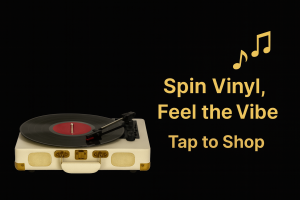“Runaway Train” feels like a song that was always meant to exist—one of those rare tracks that doesn’t just sound good, but means something.
The first few acoustic notes pull you in, and before you know it, you’re lost in lyrics that hit way too close.
It’s not just about getting lost—it’s about feeling stuck, like you’re heading in the wrong direction and can’t find the brakes.
Classic rock artists have a way of telling stories that make you feel them, and this one?
It’s a reminder that sometimes, just knowing you’re not alone can be enough to keep going.
- Writer: Dave Pirner
- Performed by: Soul Asylum
- Album: Grave Dancers Union (1992)
- Producer: Michael Beinhorn
📝 Background & Meaning:
“Runaway Train” was written by Dave Pirner, the lead vocalist and primary songwriter of Soul Asylum.
Released in 1993 as the third single from their album Grave Dancers Union, the song became an international hit and is one of the most iconic tracks of the early ’90s alternative rock era.
The song is an emotional exploration of depression, hopelessness, and the feeling of being trapped in an unending cycle of despair.
Dave Pirner wrote it during a particularly dark period in his life, when he was grappling with isolation and persistent emotional struggles.
The metaphor of a “runaway train” serves as a powerful image of losing control over one’s life and feeling unable to stop the downward spiral.
The lyrics express raw vulnerability and a desperate plea for help, connection, and stability.
The accompanying music video, directed by Tony Kaye, featured images of real missing children, with contact information displayed for each one.
This groundbreaking approach brought widespread attention to the plight of missing and exploited children and led to the recovery of several of them.
🎤 Key Themes:
- Mental Health and Depression: The song captures the helplessness and isolation of struggling with depression.
- Loss of Control: The “runaway train” metaphor symbolizes life spiraling out of control.
- A Plea for Help: The narrator expresses a longing for someone to help pull them out of their despair.
- Hope Amidst Darkness: Despite the heavy themes, there’s an undercurrent of resilience and a desire for redemption.
🎧 Notable Lyrics:
“Runaway train, never going back / Wrong way on a one-way track.”
- A haunting metaphor for feeling stuck in a cycle of despair and hopelessness.
“Seems like I should be getting somewhere / Somehow I’m neither here nor there.”
- Reflects the aimlessness and lack of direction that comes with deep emotional struggle.
“Can you help me remember how to smile? / Make it somehow all seem worthwhile.”
- A raw and vulnerable plea for connection and hope in the face of overwhelming sadness.
🎸 Musical Highlights:
- Emotive Acoustic Guitar: The song opens with a melancholic acoustic guitar riff that sets the emotional tone.
- Dave Pirner’s Raw Vocals: His cracked and vulnerable voice conveys deep emotional authenticity.
- Melancholic Melody: The soft verses build into a soaring, emotional chorus.
- Layered Instrumentation: Subtle layers of electric guitar and gentle percussion add depth and texture.
- Simple Yet Powerful Arrangement: The song’s uncomplicated structure allows the lyrics to shine.
🌍 Cultural Impact:
- “Runaway Train” became Soul Asylum’s biggest commercial hit, reaching #5 on the Billboard Hot 100 and earning them a Grammy Award for Best Rock Song in 1994.
- The music video’s focus on real missing children was groundbreaking and led to the recovery of several missing kids.
- The song became an anthem for mental health awareness, with many listeners relating to its themes of depression and hopelessness.
- It remains one of the most powerful and socially impactful music videos ever created.
- The song is still widely associated with mental health and advocacy campaigns.
🎤 “Runaway Train” Fact:
- The music video was customized for different countries, featuring missing children specific to the region where it aired.
- Dave Pirner originally wrote the song on an acoustic guitar in his basement.
- The success of the video led to renewed efforts in using media for social causes.
- The song has been covered by multiple artists and remains a staple of alternative rock radio.
🔑 What It Represents:
“Runaway Train” isn’t just a song—it’s an emotional anthem for those struggling with depression, loss, and hopelessness.
It represents:
- The emotional weight of mental health struggles.
- The feeling of being trapped in a cycle of despair.
- A powerful plea for connection and understanding.
- The ability of music to create social awareness and real-world change.
With its raw honesty, haunting imagery, and socially impactful music video, “Runaway Train” remains a timeless anthem for anyone who’s ever felt lost, hopeless, or in need of help. 🎶🚂💔
The Timeless Appeal 🕰️✨
Some songs fade with time—this one never did.
“Runaway Train” still carries the same weight, the same ache, the same pull it had the first time it played through your speakers.
Maybe it’s because everyone has felt lost at some point, or maybe it’s because the song doesn’t sugarcoat anything.
It sits in the pain, in the confusion, in the search for something better, and that honesty is what keeps it alive.
For those who grew up with it, the song is more than just a hit—it’s a memory of late-night radio, of a music video that stopped you in your tracks, of a moment when you realized music could matter.
And for those hearing it for the first time?
It’s a lesson in how classic rock artists knew how to turn something deeply personal into something universal.

